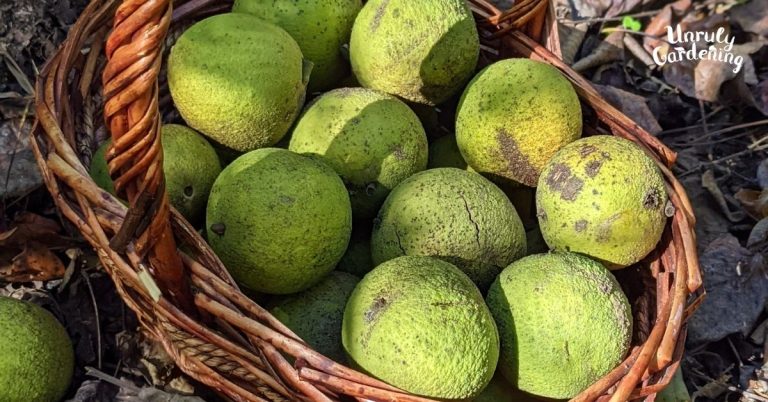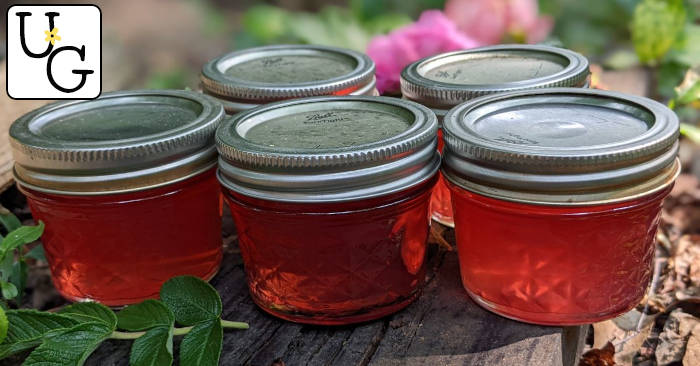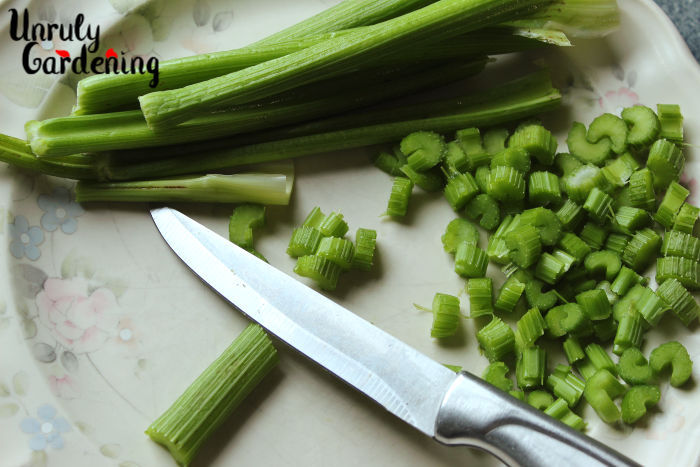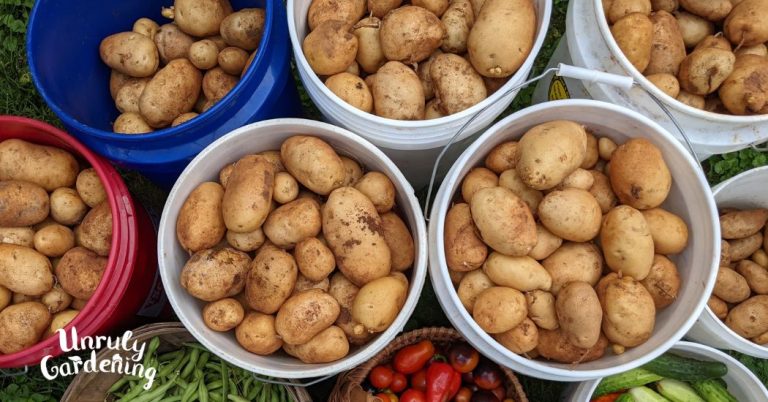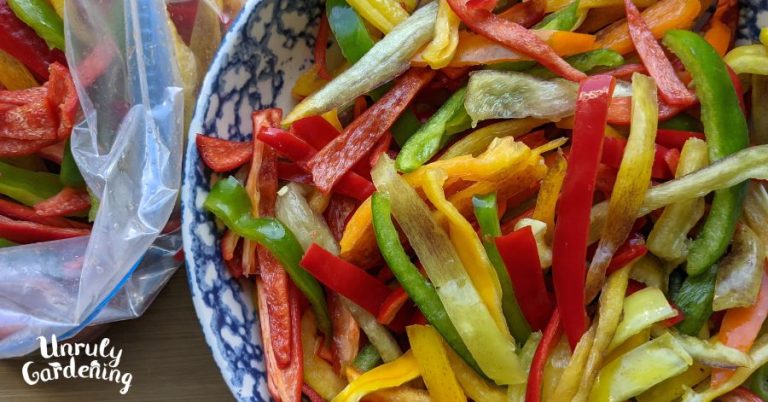How to Can FRESH Pinto Beans
Learn how to pressure can fresh pinto beans picked right from your garden, or found seasonally at your local farmer’s market!
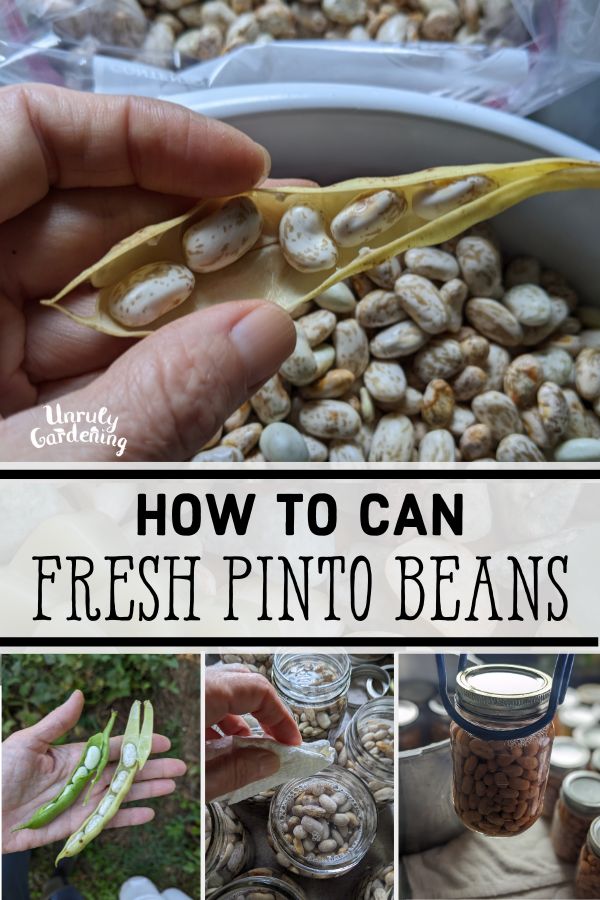
A common way of canning pinto beans involves soaking and rehydrating store-bought dried beans. As a gardener who grows your own beans, you can just pick FRESH pinto beans out of your garden, shell them, and then can them right up!
This article shows how to can fresh pinto beans.
We also have instructions for canning other beans!
This same method works for even more similar types of beans grown in your garden such as navy beans, great Northern beans, etc. Since they all take the same amount of time to process – you can even make up your favorite mixed bean combos!

NOTE: If you’re canning Green Beans (string beans, wax beans), the process is completely different. We will cover those kinds of beans more thoroughly in a future article.

The tastiest beans in the world, are ones that you grow yourself and then pressure can! They have a taste and texture that store-bought just can’t compare to.
When to Harvest Pinto Beans
Perfectly harvestable beans won’t happen all at the same time. You’re most likely to look at your plants and see beans on them in three stages: the green stage, the yellow/pliable stage, and the dried/crunchy stage.
For canning fresh beans, the pods need to be at the “shelling stage” – also called “shelly beans” or “shell out beans”.

How to know when your pinto beans are at the shelling stage & ready to harvest:
Green Stage (Not Ready for Shelling)
At this stage, the beans tend to resemble green beans or wax beans. The pods are very firm and difficult to open. The beans inside are immature and completely green.
They’re not quite ready to use as shelling beans. Give them some more time until they turn yellow and get softer.

Yellow Bean Pods (Perfect!)
This is the perfect stage for shell out beans!
The bean pods have a pliable feel to them, and the beans inside should no longer be green, but will have developed little brown speckles on them. Your beans inside the pod should still be soft – not hard or dried.
Dried, Brown Crunchy Shells (Use as Dried Beans)
At this stage, the bean pod has dried up on the plant. It feel feel brittle and crunchy, and may have black spots on it. The dry beans inside will be hard and sound like beads when you drop them on a counter.
As long as the beans inside the shell are clean and not moldy or shriveled, save these to use in dried bean recipes.

Sorting
While harvesting any kind of shelling bean, it helps to sort them into two different buckets.
The greenest ones stay on the plant to mature longer, but the yellow ones (shelly beans) go into one bucket for shelling and canning, and any completely dried ones can go into another bucket, to save for dried beans.
Alternatively, you can just leave the dried and crunchy bean pods on the plant for a longer time, and get them all later. (But not much later, or weather, mold, and bugs will reduce harvest numbers.)

Prepping the Pinto Beans
Once you’ve collected your shelling stage beans, you can refrigerate them for a few days – which is helpful if you want to collect more from the bean patch or you get really busy with other things in life.
After about 3 days though, you’ll want to go ahead and shell them. At that point, you can refrigerate the shelled beans for another day or two if needed.
Keep whole bean pods tied up in plastic grocery bags and refrigerated so they don’t dry out, and shelled beans in lidded plastic containers in your fridge. Don’t wash them until right before you’re ready to can.
Fresh pinto beans are pretty adaptable, so if you have something more perishable to can – like super ripe tomatoes – go ahead and work on them first; the beans will wait a bit!

Note on the Amount of Work to Expect
Shelling pinto beans is a rather long process! I don’t want to sugar coat that they are far more work than just opening a can of store-bought beans.
For reference, they take a bit longer than shelling green peas, because the pods don’t split open easily.
Queue up some movies, enlist the help of family members, and prepare to spend a few hours working on these beans! (But the taste and texture is soooo worth it!)

How Many Beans Do You Need?
A rough calculation that I keep in mind, based on our batches of pinto beans is that about 16 to 17 pounds of pinto beans in the shell will yield about 17 or 18 pint jars full of shelled pinto beans.
Or, once they’re shelled, about 1 1/3 cups of shelled beans should roughly fill a pint jar.
This varies quite a bit depending on if it’s a first picking (more just-right beans), or last picking (more bug bites and damaged beans to toss), but that will hopefully give you a rough estimate of how many jars to plan for.

Canning Pinto Beans Recipe – with FRESH beans
Standard, modern safe canning practice is that you must use a pressure canner to can fresh beans – or any kind of beans for that matter. Because they’re a low acid food and are very dense, beans require a long pressure canning time to ensure a safe product.
* Do not use an Instant Pot, pressure COOKER (you want a CANNER), or water bath canner for canning beans.

**Before You Begin**
If you’re new to pressure canning, or just need to refresh your memory, stop right here and go read the National Center for Home Food Preservation’s guide to Using Pressure Canners.
Also read through your entire pressure canner’s manual to make sure you’re completely knowledgeable and aware of how pressure canning works.

What supplies & ingredients you need:
- shelled pinto beans
- salt (1/2 tsp pints, 1 tsp quarts)
- a pot for boiling the beans
- a second pot of boiling water, to fill the jars
- a heatproof mesh strainer
- a pressure canner (NOT a pressure cooker)
- pint or quart jars with lids, rings
- a jar lifter, for handling hot jars
- a wide mouthed canning funnel, for filling jars
- a chopstick or skewer, for air bubbles
- a soft cloth or paper towel, to wipe rims
- a towel to place jars on
Directions to can pinto beans:
Before you’re ready to can, prepare the pressure canner by filling it with 2 to 3 inches of water. (This is 3 quarts of water for our pressure canner – look at your device’s booklet for specific instructions.) We have hard water, so we also add 2 tablespoons white vinegar to the canner to keep it from turning black inside and building up hard water deposits.

Wash or rinse your jars and fill them about one-third to half-way with extra water, then place them down in the pressure canner. This is the method we use to keep the jars perfectly hot for filling.
Rinse the shelled beans with cold fresh water.

Boil a large pot of water, then add the beans to the pot. Return to a boil and boil for 3 minutes. At this point – remove from heat, cover the pot, and soak the beans for one hour. (The way I initially learned to can fresh beans the “old timer way”, we didn’t soak for one hour after boiling, but if you’re concerned about phytic acid, this is the place to soak your beans.)
Place the canner on a burner and turn to medium, so it and the jars can start heating up. It doesn’t need to come to a boil, but should be nice and hot.
Drain the beans, and discard the cooking/soaking water. Rinse the beans lightly with fresh water.
Remove the hot jars from the pressure canner and tip the extra water from each jar out into the sink. That water was only needed to keep the jars hot, and shouldn’t be dumped into the pressure canner.
Put the salt in the bottom of each jar, so you won’t forget. The recommended amount is 1/2 teaspoon salt per pint, or 1 teaspoon of salt per quart.

Add the beans to the jar – be sure to leave a lot of headspace (only fill up to the shoulder area of the jar) since beans expand quite a bit!
Use a slotted spoon or measuring cup to scoop the hot beans into the prepared jars. Don’t pack the beans in or fill the jar too high, they will expand more than you think they will!
Add fresh boiling water in the jar, until you reach a 1 inch headspace. (About 1 inch from the top of the jar, or under the bottom-most raised line or thread on the jar’s mouth.)

Slowly, use a chopstick or skewer to slide along the edges of the jar, to release any trapped air bubbles. This helps ensure a better chance of sealing. Do this a few times then check to see if the water amount dropped. If needed, add a little more water to reach the 1″ headspace line.
Wipe the jar rim clean, then place the lids and rings on the jar. Tighten the rings to a comfortable tightness – similar to how you would put the top back on a jar of peanut butter. Not too loose, but not so tight that no one can open it!

Set the jars down in your pressure canner, tighten the lid into place, leaving the vent OPEN, and place the canner over high heat until the water boils and a steady stream of steam comes out of the vent pipe.
You must let the steam escape for 10 minutes first – this makes sure that no air is trapped in, and ensures the high temperatures needed for low acid and dense foods, like beans.
After 10 minutes of releasing steam, then you can place the weight on your canner and allow it to pressurize (or follow recommended manufacturer instructions for your device).

Process according the times and pressure below. Once finished, be sure to let the pressure canner naturally depressurize. Do not force cool the canner with cold running water! Not only is this unsafe, but can cause water to siphon from the jars, or failure of the jars to seal.
Once you open the canner’s lid, let the jars stay in the hot water for about 10 or 15 minutes before removing. Place the jars on a towel and leave completely undisturbed for at least 12 to 24 hours.
Canning Fresh Pinto Beans Processing Times
For a weighted gauge canner, process pints for 75 minutes, or quarts for 90 minutes, at 10 pounds of pressure. (If you’re above 1,000′ sea level, process at 15 lbs of pressure for the same amount of time.)
If you have a dial-gauge pressure canner, process pints for 75 minutes, or quarts for 90 minutes, at 11 pounds of pressure. (For higher elevation/altitude folks: if you’re 2,001 – 4,000 ft above sea level use 12 lbs pressure, 4,001 to 6,000′ use 13 lbs pressure, and 6,001 to 8,000′ use 14 lbs pressure.)

How Your Home-Canned Pinto Beans Will Look
Your freshly canned pinto beans will no longer look speckled, but instead be a more solid brown color. This is normal.
After the jar sits for a day or two, you’ll also notice that the liquid has thickened up and looks cloudy. This is also normal behavior for canned beans.
You may also see that the liquid amount is lower than the beans. This happens and is okay – just next time put less beans in the jar when you’re filling them.
As long as your jar has a good seal, then it is good to go and ready to store and use.
Be sure to remove canning rings before storing your jars. This will keep your jars cleaner (canning stuff and moisture can get trapped under the rings), and eliminates the risk of the lid rusting the jar shut over time.
Using Home Canned Pinto Beans
Your beans can now be used in your favorite recipes, just like store-bought beans.
If a recipe calls for 1 can of beans, then use 1 pint jar of your home canned beans instead.
I do think that home canned beans are a little softer, so gently stir them into your dishes, and sometimes you might be able to slightly reduce cooking times, depending on the recipe.
Video: Canning Fresh Pinto Beans Slideshow
Here’s a slideshow summarizing this article. (Sometimes an ad plays first, but the video will start right after! The video player won’t show up if you have an adblocker.)
Printable Recipe Card

How to Can FRESH Pinto Beans
Equipment
- a pot, for boiling the beans
- a second pot, for boiling water
- a heatproof strainer
- a pressure CANNER (not a cooker)
- pint or quart jars, with lids & rings
- a jar lifter, for handling hot jars
- a canning funnel, for filling the jar
- a chopstick or skewer, for air bubbles
- damp paper towel, for cleaning jar rims
- a towel to place the cooling jars on
Ingredients
- shelled, fresh pinto beans
- salt (1/2 tsp for pints, 1 tsp for quarts)
Instructions
- When you're ready to can, prepare the pressure canner; add 2 to 3" water, or recommended amount by manufacturer. Turn to medium heat to start warming up.
- Fill clean jars about half-way with water & place in the pressure canner (to help them heat up and stay hot) or have your jars staying nice and hot in a dishwasher.
- Rinse the shelled beans with cool water, then dump them into a pot of boiling water.
- Boil a pot of water, then add the beans to the pot. Return to a full boil, then boil for 3 minutes. At this point, remove from heat, cover the pot, and soak beans for one hour. (The way I initially learned to can fresh beans the "old timer way", we didn't soak for one hour after boiling, but if you're concerned about phytic acid, this is the place to soak your beans.)
- Place the canner on a burner and turn to medium, so it and the jars can start heating up. It doesn’t need to come to a boil, but should be nice and hot.
- Drain the beans, and discard the cooking/soaking water. Rinse the beans lightly with fresh water.
- Remove the hot jars from the pressure canner (discarding the extra water in each jar down into the sink) or from your dishwasher and fill them up to the shoulder area with beans. (Don't overfill!)
- Place the salt in each jar. (1/2 teaspoon for pints; 1 teaspoon for quarts)
- Add fresh boiling water into the jars, until the water reaches a 1 inch headspace. (This is just below the bottom line at the top of the canning jar.)
- Use a chopstick or skewer to remove air bubbles. Adjust the water level again, if needed.
- Wipe the rims of the jar with a damp paper towel, then apply the lid and ring.
- Set the filled jars down into your pressure canner, tighten the lid, place over high heat until a steady stream of steam comes out of the vent pipe for 10 minutes, or however long the manufacturer suggests.
- See notes for specific processing times & pressures, but it's generally 75 minutes pints, 90 minutes quarts.
- After processing and the canner has naturally depressurized, you can open the canner’s lid, then let the jars stay in the hot water for about 10 or 15 minutes before removing. Place the jars on a towel and leave completely undisturbed for at least 12 to 24 hours.


